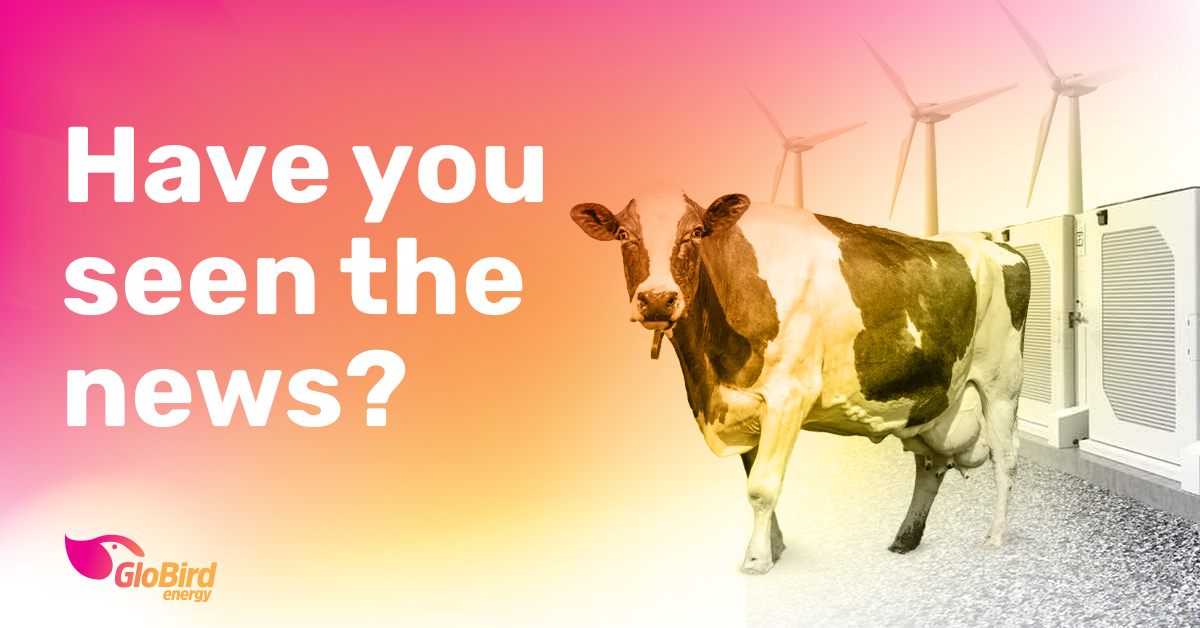Have you seen the news? A wrap of what’s happening in the energy industry.
Each week, we read all sorts of things about the energy industry in Australia and what’s happening around the world.
Admittedly, some of it isn’t all that interesting, but there are always a few things going on that we think are worth noting.
So, here are a few snippets of developments that have piqued our interest in the past month or two.
Solar windows are nearly here
We wrote about this concept when we first heard about it six or seven years ago, and now a Perth-based company says we’ll see them in action before the end of this year.
These are windows that act as solar panels and they’re already being installed on some city skyscrapers.
The clear, double-glazed glass uses nanoparticles to divert rays of light to small solar strips embedded at the edge of the window, where they’re converted from energy into electricity.
Energy-rating scheme to expand to existing homes
The Government is consulting on expanding the Nationwide House Energy Rating Scheme (NatHERS) to include energy assessments and ratings for existing homes.
NatHERS currently assesses new homes and major renovations to ensure they meet energy-efficiency standards. The scheme also promotes sustainable building practices.
The assessment aims to boost energy efficiency, reduce carbon footprints, reduce household energy costs, and improve comfort for Australians in their homes. The planned expansion would extend the scheme to millions of existing homes nationwide from mid-2025.
Using cow manure to make green hydrogen
The benefits of green hydrogen are many and varied, but the challenge remains to produce hydrogen (which doesn’t occur in abundance naturally) cleanly and efficiently.
The University of Illinois Chicago has recently unveiled a groundbreaking technique for generating green hydrogen from agricultural or livestock biomass, with the help of solar energy.
The technique is remarkable for its energy efficiency, reducing the energy required to produce green hydrogen by a whopping 600 per cent.
Cheaper green hydrogen production can’t come soon enough
Aussie mining billionaire Andrew Forrest, who has spent years promoting the benefits of green hydrogen, has now put his company’s green hydrogen ambitions on the backburner.
Mr Forrest recently announced 700 redundancies at Fortescue in a sweeping restructure, which includes consolidating its mining and energy arms into one division.
The job cuts and restructure signal the end of Fortescue’s plans to produce 15 million tonnes of green hydrogen per year by 2030.
Green light for Australia’s largest solar farm
Sun Cable’s grid-scale solar farm, set to span over 12,000 hectares in the Northern Territory, has been given the tick of approval by Environment Minister Tanya Plibersek.
The government also signed off on an 800 km transmission line from the solar farm to Darwin and an underwater cable link to the end of Australian waters.
The $19 billion Australia-Asia Power Link project is slated to generate 6GW of renewable energy, one-third of which would be transmitted to Singapore.
600 MW solar farm set for NSW
The Birriwa Solar Farm, comprising a 600 MW solar farm, a 600 MW/1200 MWh BESS (battery energy storage system), and an on-site accommodation camp, looks set to go ahead.
The project, located approximately 15 km southeast of Dunedoo in the Central-West Orana Renewable Energy Zone (CWO REZ), has received conditional approval from the New South Wales Independent Planning Commission.
When completed, the farm will have the capacity to generate enough renewable energy to power more than 229,000 homes.
Large-scale battery construction underway in Victoria
A 300 MW large-scale battery at Mortlake Power Station is now under construction, with works expected to be completed in late 2026.
Mortlake Power Station, the largest gas-fired power station in Victoria, is regarded as an ideal site for a large-scale battery, as it’s adjacent to the Moorabool to Heywood 500 kV transmission line and sits within Victoria’s South-West Renewable Energy Zone (REZ).
The battery will have a capacity of 300 MW and a dispatch duration of just over two hours (650 MWh).
Queensland $1.3 billion wind farm project set for completion in 2027
The 285 MW Lotus Creek Wind Farm has become the first 100 per cent publicly owned wind farm to reach the construction phase under the Queensland Energy and Jobs Plan, following its acquisition by the publicly owned energy provider, CS Energy.
The wind farm, which will feature 46 wind turbines and produce enough clean energy to power the equivalent of 150,000 homes, is expected to be operational in 2027.
The project has received State and Federal government approvals and is subject to a range of best practice conditions, including securing more than 4,500 hectares of land in the region to be improved and protected in perpetuity as environmental offsets.
Air New Zealand concedes emissions-reduction targets can’t be met
Air New Zealand has become the first major airline to back out of the corporate climate action Science Based Targets initiative (SBTi).
In a statement to the ASX in late July, the airline said many of the levers needed to meet the 2030 target, particularly the availability and affordability of new aircraft and alternative jet fuels, were outside its direct control and remained “challenging”.
Chief executive Greg Foran said delays to Air New Zealand’s fleet renewal plan posed an “additional risk” to the achievability of its carbon emissions target.
Progress isn’t always linear
As we keep track of what’s happening in the energy sector, we’re reminded that there’s a lot more positive news than negative.
It’s great to see projects that were only proposals a few years ago not only under construction but being completed and commissioned.
Perhaps the most encouraging thing is that there are a lot of stakeholders who are thinking big and working hard to move the energy industry forward.
